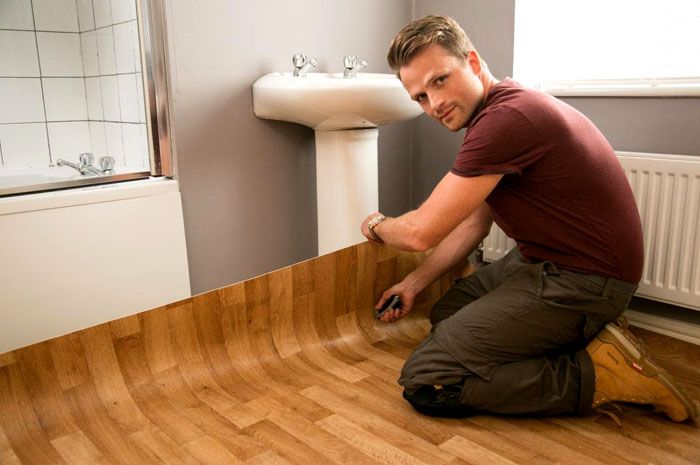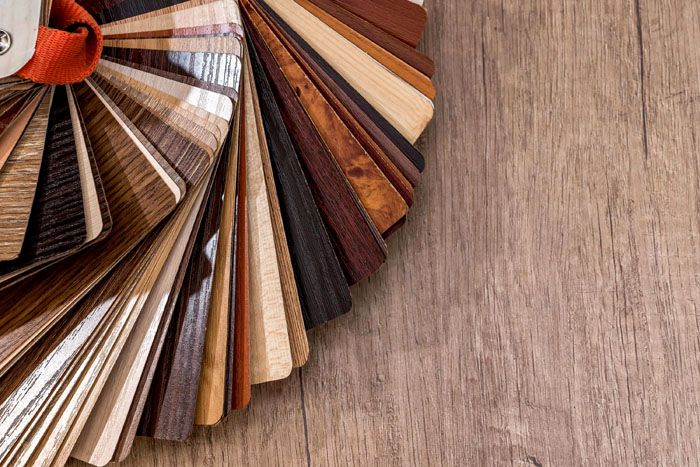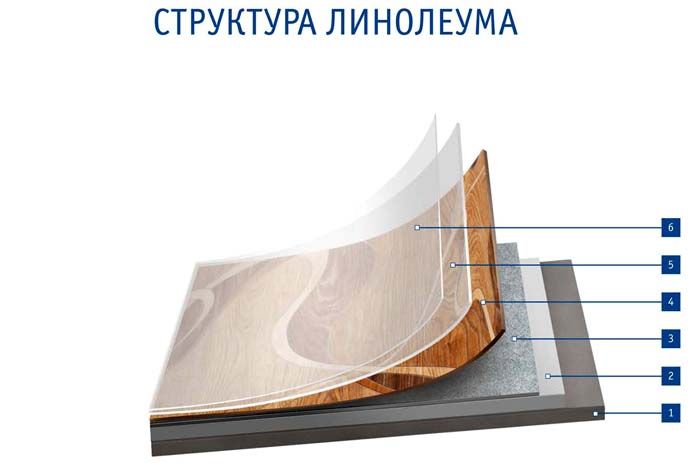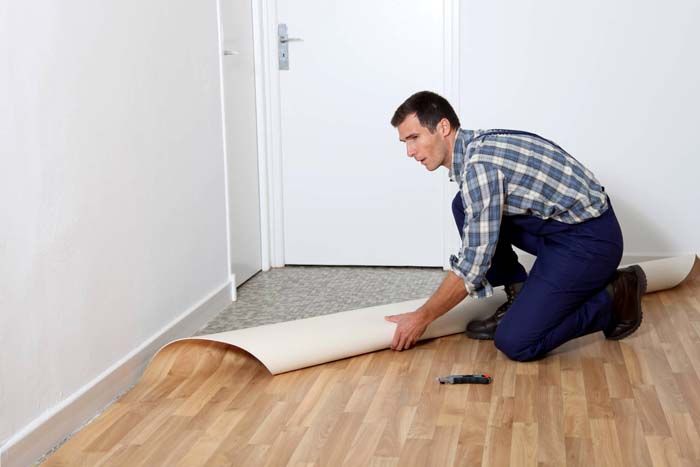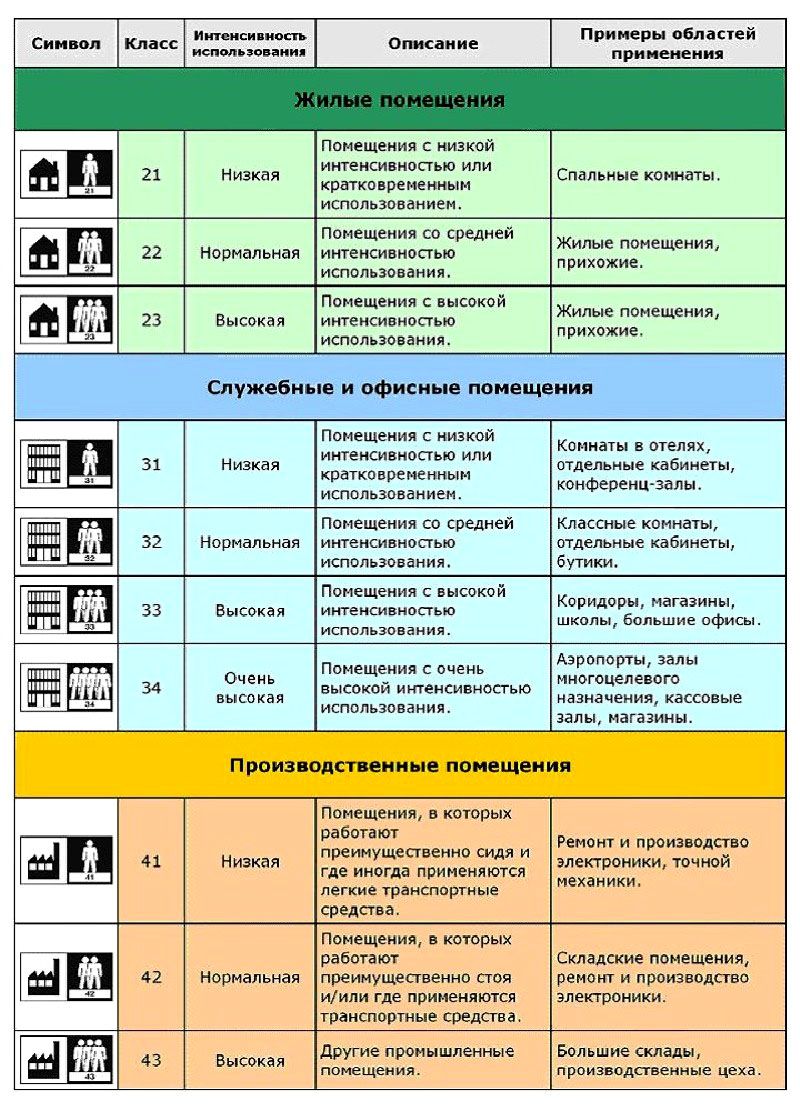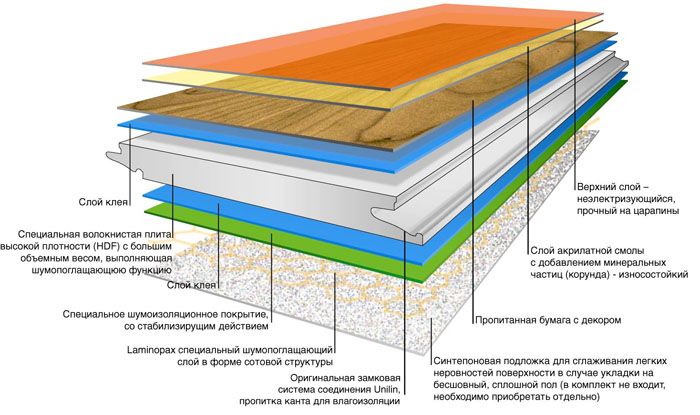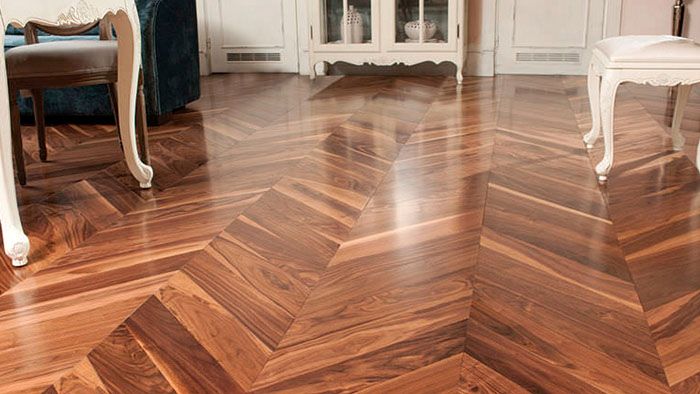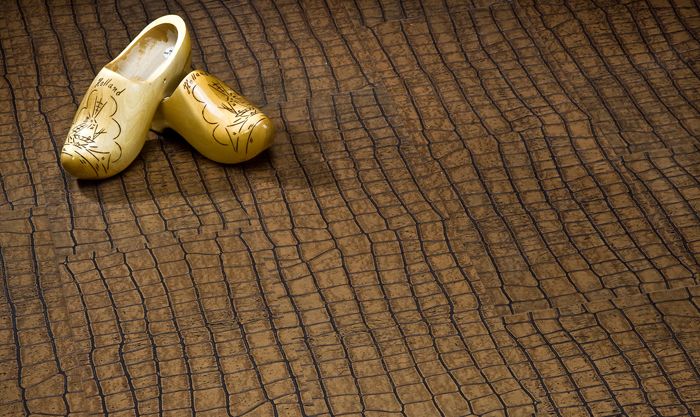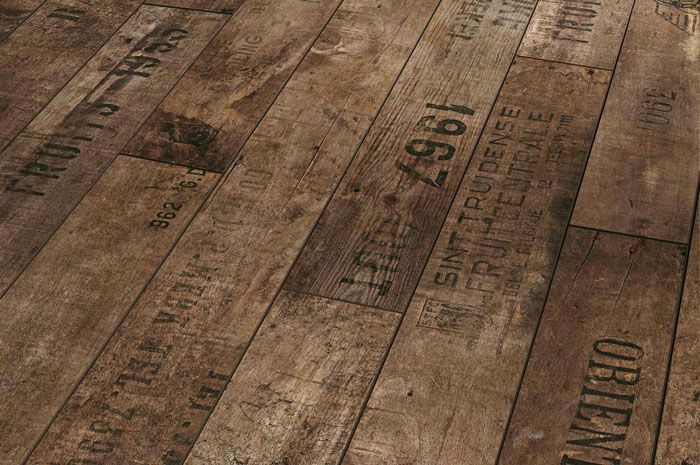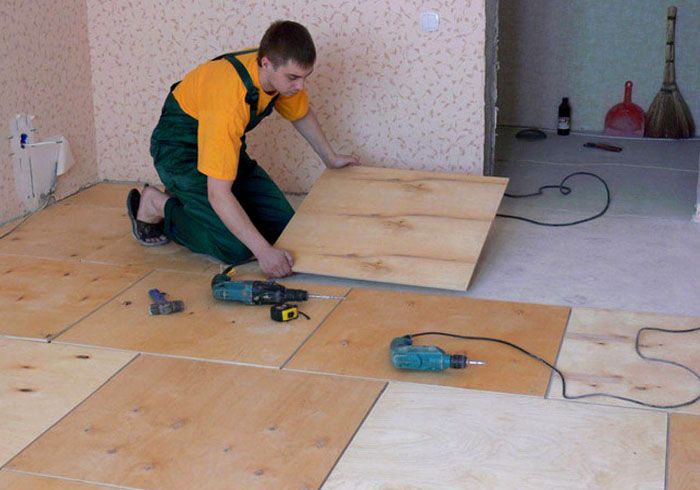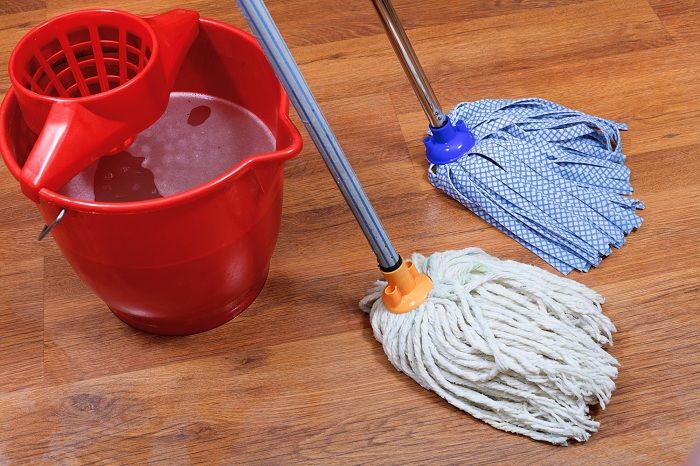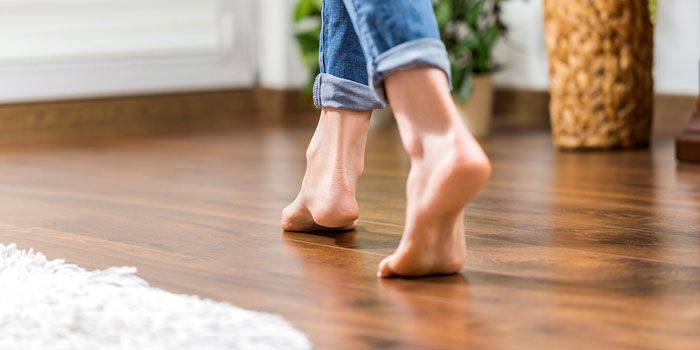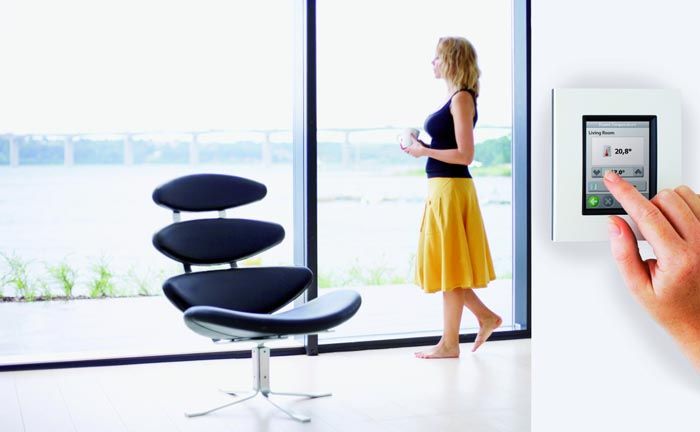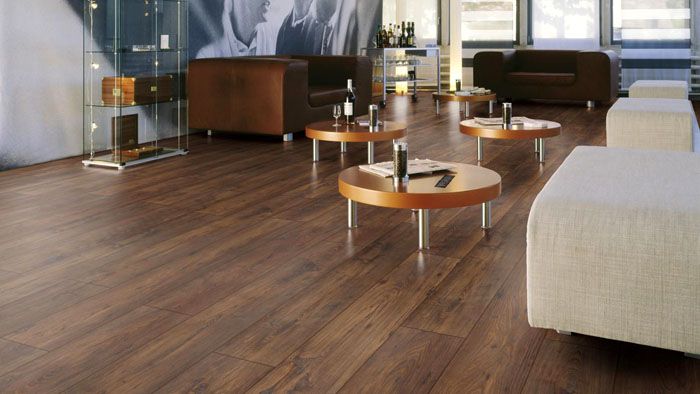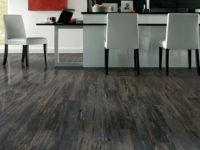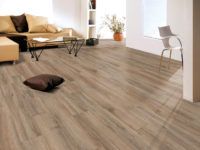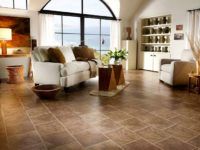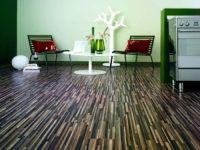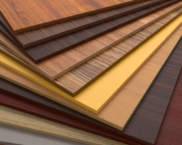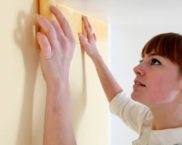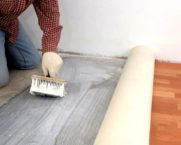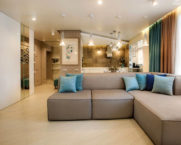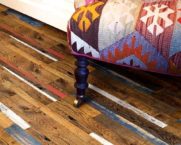Choosing a floor covering: which is better - laminate or linoleum
Repairing floors is a troublesome and costly business. For this reason, each owner chooses a floor covering that would last as long as possible and at the same time be easy to maintain. So a reasonable question arises: which is better - laminate or linoleum? In terms of cost and appearance, these coatings are in the budget segment, which means that you need to compare other characteristics of these materials. This is what we will do in our material.
The content of the article
- 1 Everything you need to know about linoleum
- 2 Laminate and its characteristics
- 3 Linoleum and laminate: which is more expensive, which is stronger? Compare parameters
- 4 Video: which is better, according to an expert, linoleum or laminate
- 5 Reviews from real users: which is better - linoleum or laminate
- 6 Photo in the interior: linoleum under the laminate and vice versa
- 7 Conclusion: which is better - laminate or linoleum
Everything you need to know about linoleum
For those who do not know anything about this popular coating, we inform you: linoleum is different. And it differs not only in color and thickness.
Linoleum from modern manufacturers is of five main types:
| View | Specifications |
|---|---|
| Natural | What is natural linoleum? The coating is made from coniferous resin, oak bark and flax oil. Only natural dyes are used for coloring. The basis of the material is jute fabric. This natural material is not afraid of ultraviolet radiation, does not lose its colors and does not react to fats, alcohols and alkalis. |
| Pvc | Polyvinyl chloride coating is produced on different types of substrates, which are non-woven fabric, woven fabric and PVC foam. On sale you can find material without a base and varieties with several layers. |
| Nitrocellulose | Thin baseless colloxine coating is moisture resistant and highly elastic. The only drawback of this material is fire hazard. |
| Glyphthalic | The basis of this material is fabric. Distinctive features of glyphthalic material are increased sound insulation and the ability to retain heat. The floor covering may deform during operation. |
| Rubber | The two-layer coating consists of synthetic rubber and wood powder. It is not afraid of water and fits well on any surface. This type of material is not recommended for use in residential premises due to the release of substances toxic to humans. |
The most popular home coatings are natural and PVC linoleums.

Natural material is less widespread due to its relatively high cost, but PVC breaks records in sales due to democratic prices
Where is linoleum used
According to the area of application, linoleum is divided into several subspecies:
- Household linoleum can be used for living rooms in houses and apartments... It has good wear resistance and is available in a variety of patterns and textures. The main indicators of household coverage:
- weight per m² - up to 2.25 kg;
- coating thickness - up to 3 mm;
- sound absorption - up to 18 dB;
- thermal conductivity - up to 0.035 VI / mK;
- shrinkage - up to 0.2 mm per 1 m.
- Commercial coverage intended for offices and production facilities in which an increased load on the material is expected. The surface layer of linoleum is particularly durable and resistant to mechanical stress. This type of linoleum has different directions: for sports facilities - non-slip, soft material, for medical institutions - resistant to chemical attack, for offices - with good sound insulation and antistatic properties. Technical indicators of commercial linoleum:
- weight per m² - up to 2.8 kg;
- sound absorption - up to 10 dB;
- shrinkage - up to 0.1 mm per 1 m.
- Semi-commercial material- average in performance between commercial and household coverage. More durable, durable than a simple household. Basic indicators:
- weight per m² - up to 2.5 kg;
- sound absorption - up to 16 dB;
- shrinkage - up to 0.1 mm per 1 m.
Durability and resistance to mechanical stress is determined by the thickness of the protective PVC layer. Depending on this indicator, the floor covering should be selected for different rooms: for children's 0.2 mm is enough, corridor and kitchen - 0.25 mm, offices - from 0.3 to 0.5 mm.
Related article:
What linoleum to choose for home - it's not just that they took one roll and laid it in all rooms. You need to choose in accordance with the purpose of the room. We will talk about this in the material.
Features of the base of linoleum
Linoleum has several layers:
- protective, transparent;
- decorative part;
- upper foamed;
- carrier layer made of fiberglass;
- bottom foamed.
The main task of the base is to level the surface. In addition, the base performs heat and sound protection functions. Depending on the manufacturing technology, the base may consist of non-woven material - synthetic fibers arranged in a chaotic manner and resembling felt. Another option is synthetic or jute fabric. And the most common is polymer foam. It is good because it quickly returns to its original shape, that is, if someone walked through your apartment on high heels, the traces will disappear in a couple of minutes. Felt compares favorably with good thermal insulation, but it gives a slight shrinkage.
What to put on the floor in the apartment is up to you.But if you often walk barefoot on the floor, go for felt or foam.
What gives the coating thickness
The more layers a coating has, the thicker it is. Base materials are the thinnest. The thickness of linoleum depends on the class and scope. Here's a quick guide:
| Index | PVC linoleum with heat-insulating base | Woven PVC linoleum | PVC linoleum on foam | PVC linoleum without base |
|---|---|---|---|---|
| Overall thickness, mm | 3,6 | 2 | 1,5 | 1,5 |
| Front cover thickness, mm | 1,2 | 0,15 | 0,2 | 0,2 |
| Abrasion, μm | 90 | 210 | 90 | 120 |
Advice! It is quite difficult to determine the thickness of linoleum by eye, therefore, when choosing a material, it is better to contact the seller and ask for the technical data sheet of the product.
Classes of linoleum for wear resistance
Each coating must have a wear resistance class in its characteristics. It is indicated by a two-digit number. The first number in the designation is the recommended type of room. Number 2 means living rooms, 3 - office, 4 - premises with intensive use. The second number is the allowable surface load level. One means the minimum load, four means the maximum. Based on these data, we will divide the linoleum into classes:
- 21-23 class - linoleum for household use;
- 31-34 class - semi-commercial material;
- 41-43 class - coating for industrial facilities and offices.
Note! The given data on the class of the product should not force you to refuse to use linoleum 31 or 43 class in the house. They are given to represent the wear resistance of the material.
Pros and cons of linoleum
Since our task is to decide which is better: linoleum or laminate floorall the pros and cons of the coating should be considered.
| pros | Minuses |
|---|---|
| The affordable price of the products allows you to purchase such coverage for the whole house. | In most cases, it is made of artificial materials that have a pungent smell. After installation, thoroughly ventilate the room for a long time. |
| Moisture resistance - linoleum can be safely used in the bathroom | |
| Resistance to mechanical stress. The material is not afraid of shoes with heels, movement of chairs and tables | The cover does not like shoes with black rubber soles. These boots leave stubborn stains |
| Easy to clean. Linoleum does not absorb dirt, it is easy to clean with plain water | |
| Doesn't need additional protection like board or parquet. It does not need to be painted or varnished | For the installation of linoleum, the surface should be carefully leveled. Any irregularities are immediately noticeable and will eventually show up as cracks in the coating. |
| The coating is not slippery, it is very convenient, especially if there are children or the elderly in the house | |
| The material can be combined with a "warm floor", laid on an additional substrate for thermal insulation | Linoleum shrinks to varying degrees. It is not advisable to leave seams in the center of the floor or in another visible place. In a few years they will disperse, and this will be very noticeable. |
| The coating perfectly retains its color and pattern, is not afraid of direct sunlight |
Laminate and its characteristics
Laminate is a covering for more than one year, and the choice of material is not an easy task. Not the last criterion is the manufacturer and country of origin.
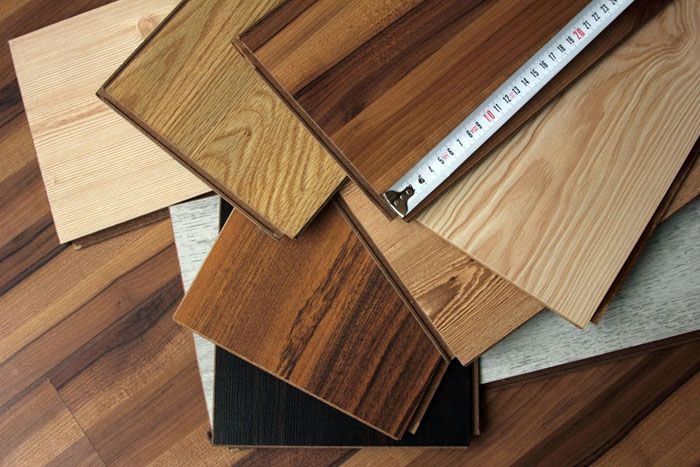
The more famous the name, the more guarantee that your floor will delight you with its appearance for a long time.
And now more about other important criteria.
Board device
The shape and size of the laminate is similar to an ordinary board, but slightly thinner. The length of the element is up to 170 cm and the thickness is up to 14 mm. The width of the board is 20 cm. Recently, manufacturers have put on sale square-shaped boards resembling tiles.
The basis of the laminate is Fiberboard or Chipboard... The top layers are a decorative coating and a transparent protective layer. The bottom layer of the board consists of waxed paper, which does not allow water to pass through.For greater impact resistance, some models use an intermediate layer between the fiberboard and the decorative coating - a special film that increases the impact resistance of the product.
Laminate classes and strength criteria
The classification of the laminate is similar to the classification of linoleum. Here, as in the first case, the first digit - a two-digit number - indicates the scope. Two is for household use, three is for commercial. But in fact, now it is difficult to find laminate class 21-23. Most buyers prefer more wear-resistant classes - 31-34. In the technical specifications, you can find another indicator that speaks of the resistance of the laminate to mechanical stress. Typically, this is the AC mark and a number from 3 to 6. For example, the AC3 mark means that the laminate is suitable for low-traffic areas such as living rooms. AC4 can be used for corridor and kitchen.

AC5 can even be laid on the dance floor, it will withstand at least eight seasons of ballroom dancing
The most durable laminate is AC6. It can be laid in the gym. The price of such a coating is rather big - it starts from 2,000 rubles per 1 m². It is used in public places: airports, schools, clinics. Manufacturers give a quality guarantee of 10 years, and if you lay such material in the house, then it will serve for more than one generation.
Related article:
What does laminate class mean? A detailed description of the existing classes of laminate with examples of applications in a separate publication of our portal.
Board appearance: design options
The design of the laminate can be very diverse. It will not be difficult for you to choose a material that matches your interior design and color:
According to the picture:
- under the tree - laminate can successfully imitate any type of wood: oak, beech, maple and others. The artists very accurately conveyed the texture and color of the natural material. At the same time, the board can also look like a skillful parquet with a multi-part pattern from different types of wood;
- under the skin - such an interesting option is suitable for an exquisite and original interior... Many designers propose to finish with such a laminate not only the floor, but also the walls. The board is produced with imitation of crocodile, snake, bovine skin, various embossing and colors;
- under the metal - another fashion trend in high-tech style design. Such a coating will perfectly fit into kitchen interier or teenage room;
- under the stone - stone imitation looks stunning, while floors are as cool as natural marble or granite. Laminate with this pattern is in good harmony with the real fireplace or a kitchen with an imitation finish stone tiles.
In addition to the listed types, there is also a special type - designer laminate. These are unusual products from well-known companies that will become a unique note in your interior.
Pros and cons of laminate
Continuing to solve the dilemma of what is better to lay in the apartment - laminate or linoleum, consider the positive and negative sides of the board as a floor covering:
| pros | Minuses |
|---|---|
| Laminate is much easier to transport than linoleum. A large roll will not fit in every car, and compact briquettes of boards are easy to place in the back seat of a passenger car. | The coating is afraid of excessive moisture, deforms and swells when exposed to large amounts of water. |
| The design of the board allows you to use it for almost any interior. | |
| Laminate is easy to maintain - it is wiped with a damp cloth. | Laminate keeps heat worse, floors are cold. |
| Laying the board does not require special qualifications and additional materials. | |
| Laminate can be used in any room, it is an environmentally friendly material. | Fibreboard flooring is very noisy, neighbors will know about all your movements. |
| The coating is durable, does not fade under the influence of ultraviolet radiation. | |
| Natural processes in the board allow it to expand and contract evenly as the temperature changes. In this case, the coating does not give cracks and cracks. | The laminate is slippery, with heels or just slippery shoes, there is a great risk of injury. |
If you decide to change the flooring to a laminate during the renovation process, please note that you need to take care of it accordingly.
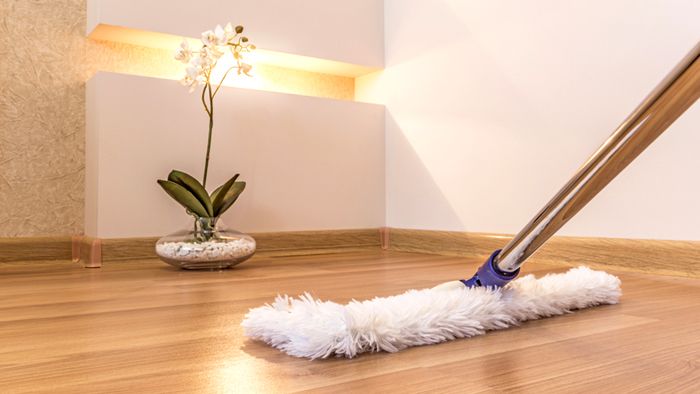
For cleaning, you will need a special mop that does not leave water drips, and an antistatic agent should be added to the water for cleaning
Scratches on the laminate can be hidden with special colored putties. If you take proper care of your board, it will last a very long time.
Related article:
What is the best laminate flooring for an apartment? Recommendations for the correct choice, types of lock connections, an overview of manufacturers in a special publication of our portal.
Linoleum and laminate: which is more expensive, which is stronger? Compare parameters
We examined in detail all the pros and cons of laminate and linoleum. Now is the time to compare both coatings for all important characteristics.
Mounting
For laying laminate there is no need to align every small defect - they will all disappear backing and a flat board. But linoleum will surely crack in place of each tubercle. But there is another aspect: linoleum can be safely laid on a surface with a difference in height. It takes literally half an hour to lay it down - unrolled the roll, secured skirting boards, and you're done.

Laminate is a little more difficult, you have to adjust and cut the fragments, laying the mosaic from the boards
Related article:
DIY laminate flooring, the step-by-step instructions of which are discussed in this article, are simple, but there are still some nuances in working with it.
Contact with water
Every house or apartment has rooms in which the floors are often in contact with water. Emergency situations often arise in the kitchen, and in bathroom - constant humidity due to frequent use of a shower or a hot tub. Practical owners choose linoleum for such premises. He is not only not afraid of water, but also does not let it through, so that accidentally spilled moisture will not seep to neighbors.
But the laminate will inevitably deform, and in the event of an accident, you will have to completely change the coating. An exception may be a special moisture resistant laminate.

Soundproofing
For private one-story houses, the problem of soundproofing floors is irrelevant. Even if you have small children, they can jump and run around the house for their own pleasure, it will not bother anyone.
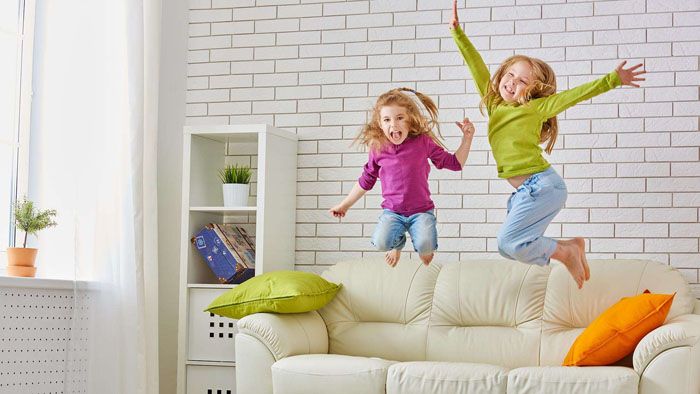
But in high-rise buildings, in the absence of soundproofing of the floor, children's spontaneity is fraught with problems with neighbors from below
Linoleum on felt or foam backing will conscientiously absorb any shocks and absorb unnecessary noise. But the laminate, on the other hand, perfectly conducts every knock. The only way out is to use a special cork backing, but it does not guarantee such soundproofinglike soft linoleum.
Which is warmer: laminate or linoleum
In fact, the answer to this question is not easy. Whether the floor is warm or not depends not so much on the coating as on the substrate. If you put a heat-insulating layer under the laminate, for example, isolon, it will not be any worse to retain heat than linoleum on a thick felt base. And baseless linoleum on a concrete floor will not give you the pleasure of running barefoot.
Combination with underfloor heating
It is now very popular to use different floor heating systems.
But what kind of coverage should you choose?
- Laminate up to 7 mm thick and with special markings can be used for water and electric floors... Please note that the product label says WarmWasser, which means it is suitable for underfloor heating.
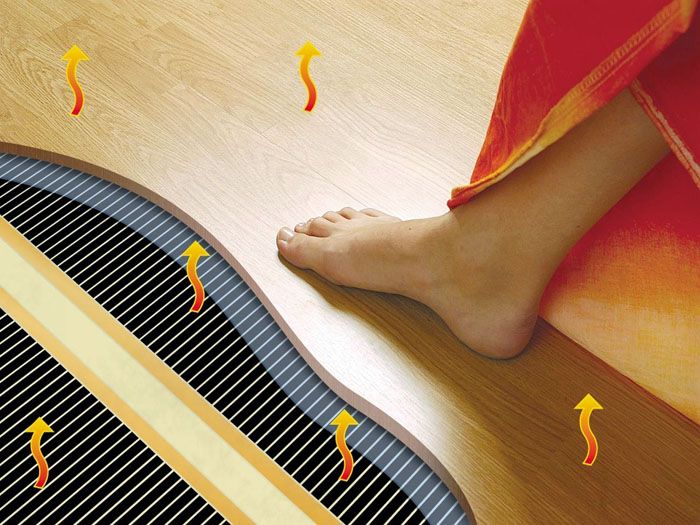
In no case should you use a cheap laminate for "warm floors", when heated it can release toxic substances
- Linoleum can also be laid on "warm floor", but here you should pay attention to the marking. This coating can easily withstand temperatures up to + 26 ° C. If the floor is hotter, the linoleum will begin to deform and spread an unpleasant chemical smell throughout the house.
Safety
Supervisory authorities require manufacturers of building materials to pass mandatory certification, so, in principle, you are unlikely to be able to purchase goods harmful to health in a hardware store.
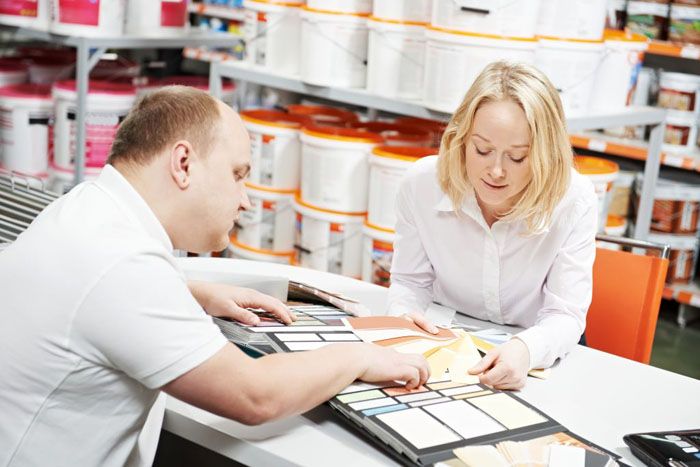
The only question can be raised by the lack of a certificate, in this case it is better to refuse to purchase goods of dubious quality
Otherwise, both coatings have phenolic compounds in their composition. Manufacturing technology makes them stable, and harmful vapors can occur only when the material is very hot or ignited. And if you take, for example, natural linoleum, consisting of natural components, then there are no complaints at all, it will not harm anyone even when burning.
Life time
The warranty period for linoleum is 10 years. Renowned manufacturers such as Tarkett claim three decades of coating lifespan. Inexpensive laminate flooring, even with careful maintenance, will not last longer than 5 years. if you love to make repairs and updating the interior every 4-5 years, then this is your option.
Care
For lovers of frequent wet cleaning, it is better to saddle the choice in favor of linoleum. He is not afraid of water or chemicals for cleaning. But this coating is very afraid of burns.
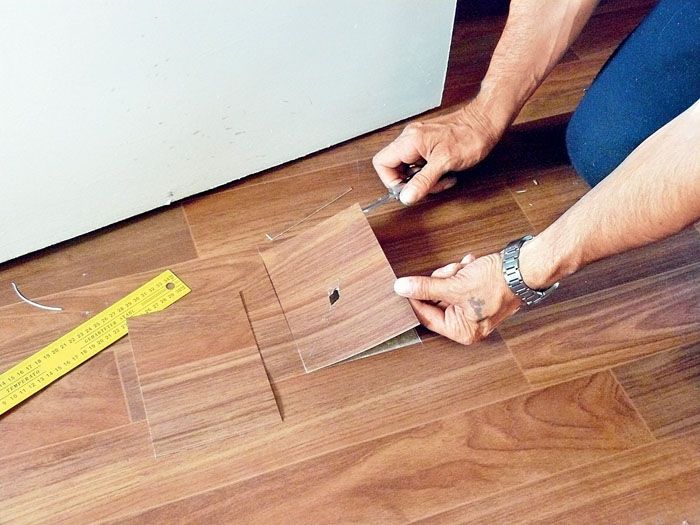
Ashes from a cigarette, a dropped hot iron or a lighted match will leave an indelible mark on the floor.
Large furniture or sharp objects also leave traces. Laminate is not afraid of "sharp" approach. It will look flawless under all circumstances, as long as you do not deliberately scratch it and not filled with water.
Appearance: what to choose - laminate or linoleum
Here, we can say that the forces are equal. Sometimes it is difficult to distinguish what is laid on the floor: laminate or linoleum very similar to it and vice versa.
Both coatings successfully imitate stone, wood and can be done in a design manner. Modern manufacturers have long rehabilitated linoleum as a morally obsolete coating, and now it is "on a horse" again.
Which is cheaper: laminate or linoleum
High-quality linoleum with a powerful backing is not cheap. These materials also have inexpensive models, the most budgetary options for linoleum are about half the price of laminate. Expensive high quality laminate is about 2.5 times more expensive than linoleum of similar quality.
If we take the average quality, suitable for confident operation in residential premises, then 1 m2 of linoleum will cost about 300 rubles, laminate - 450-500 rubles. But the service life of these coatings will be different, this has already been said. So, with a slight stretch, you can award the victory in this battle to linoleum.
Video: which is better, according to an expert, linoleum or laminate
Before making the final choice, listen to the opinion of experts and people who have been using this or that type of coating in practice for many years.We offer you a short video with a review from an expert on the choice between laminate and linoleum:
Reviews from real users: which is better - linoleum or laminate
On numerous forums, a discussion is being held on the issue of interest to us. As part of today's review, we have prepared for you a selection of the most interesting reviews from various resources. They will help form an idea of the advantages and disadvantages of a particular choice:
Skiffi review: I hope you haven't made your choice yet, otherwise I'm late ... But I can give you a thousand reasons why you shouldn't lay linoleum, and only one why you just can't lay it. Because it is polyester, any linoleum is synthetic, and it has very harmful properties, toxic emissions. And believe my education, as a specialist, I simply forbid you to do this if you have children. Lay the laminate and cork underneath. And when choosing, consult with the sellers, look for a sticker "environmentally friendly", I advise German manufacturers, then you definitely will not have anything that will not creak (this is generally nonsense), but you can handle the styling yourself. By the way, the laminate has not only a large selection of textures, but also textures. And the entire collection is updated every three months, so it's a big problem to meet exactly the same sex at a party. And if you are afraid that you will be flooded, I will reassure you on this score, there are laws providing for responsibility for this. And according to these laws, you will be compensated not only for material and moral damage. But it's better not to think about it, after all, this is not the situation in which you want to participate. Well, as the saying goes, “Wolves are afraid, do not go to the forest.
More details on https://forum.ivd.ru/topic/22933- what- is- better- to lay- linoleum- or- laminate/?page=3
Review skissa, St. Petersburg: I've been in my apartment for 11 years, I don't remember which class, they took the cheapest one. All ambushes with him happened in the first month of operation, as they did not know how to handle him (for example, they plowed a little with a bedside table with iron "horseshoes"). Water has been spilled repeatedly (meaning a large amount), if you wipe it off right away, nothing will happen, and you don't have to wipe it spilled from a glass if you don't have the strength to do it. And the cat has marked it several times. Nothing rose up anywhere, even when the neighbors flooded it up above. As for the knocking of heels - how about linoleum on heels? Especially stiletto heels? It may be quiet, but the linoleum is immediately khan! And I only light up on my laminate if I forget and come back for something. But in general, why walk in the house in street shoes?
When they bought the dacha, I was surprised to see a laminate on the floor, he was already 2.5 years old by that time, the house was not heated in winter, at least that laminate. Six months of construction work did not kill him, iron tools were lying on it, building materials, antiseptic were spilled, and nothing, now they were swept, rubbed like a new one (though in fairness I will say that it is under a dark oak and rice so blurred, nothing is noticeable on it) how to sweep and wash it is pleasant compared to linoleum!
Here, a whole ode to the laminate turned out. It was possible to write so much only out of great love for Buryat. Of course, I like high quality parquet boards more, but here they compare not with it, but with linoleum, so my choice is definitely a laminate.
More details on https://www.forumhouse.ru/threads/10394/
Review of Yury, Moscow: I don’t think they are very different in terms of ecology. Laminate is another material in terms of naturalness. And in terms of aesthetics, linoleums are now well, very pretty. Under it, only a flat surface is needed and in no case should it be glued. Seams can be avoided by buying a wider one and putting on waste. One could think about it when switching from parquet to linoleum, but here there should be no moral torment.
More details on https://www.forumhouse.ru/threads/10394/
Photo in the interior: linoleum under the laminate and vice versa
Both of these materials look great in different designs.It is often difficult to understand what lies beneath your feet until you have checked the material by touch. Take a look at these two galleries.
Linoleum for laminate
Laminate for linoleum
Agree that in aesthetic terms, both the coating looks more than worthy.
Conclusion: which is better - laminate or linoleum
So, did we manage to answer the question which is better in the house: laminate or linoleum? Both the one and the other cover a lot of advantages, and it is very difficult to make a choice. But to be honest, perhaps linoleum wins a small but sure victory. It is cheaper, warmer, more durable and easier to install. But the choice, no doubt, is up to you, dear readers. What are you voting for and why? Write about it in the comments.





